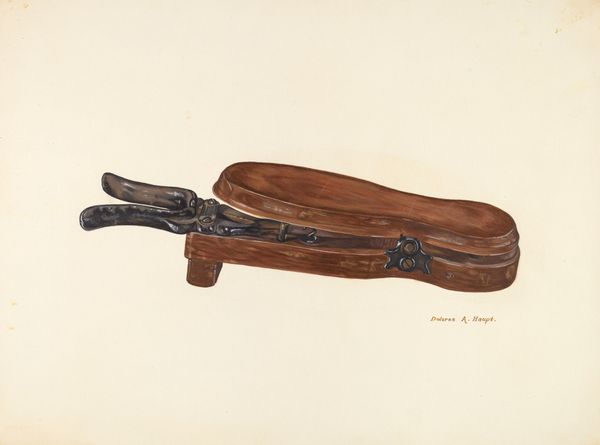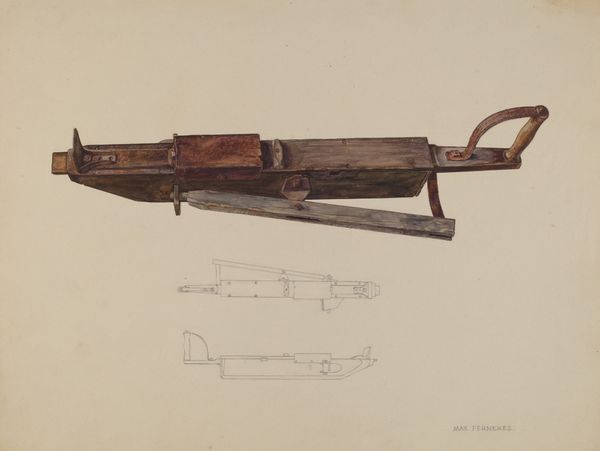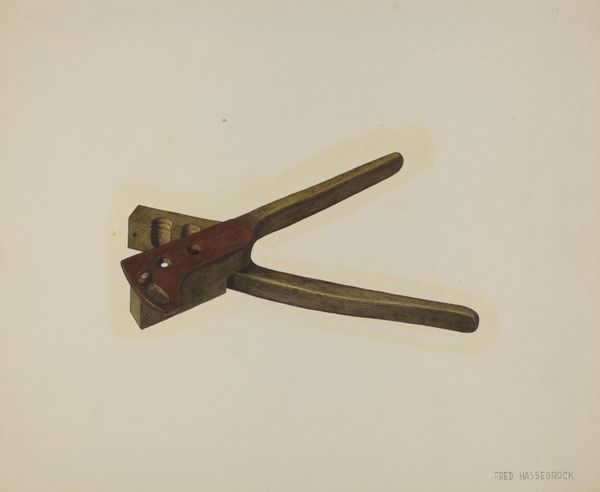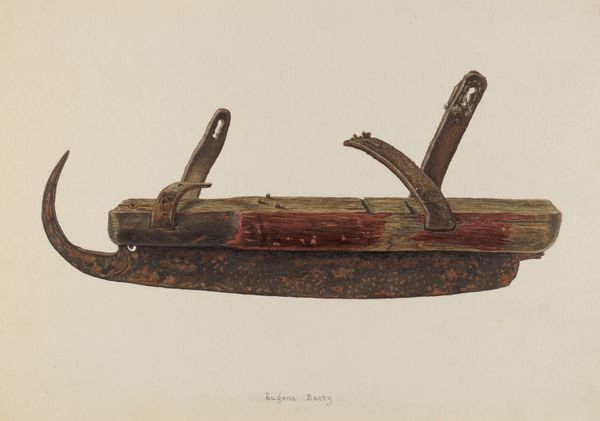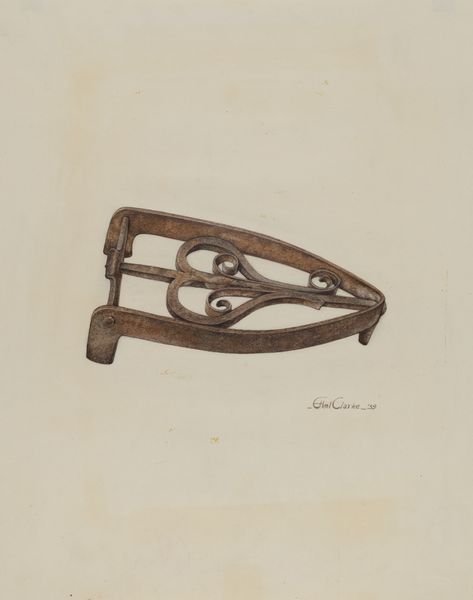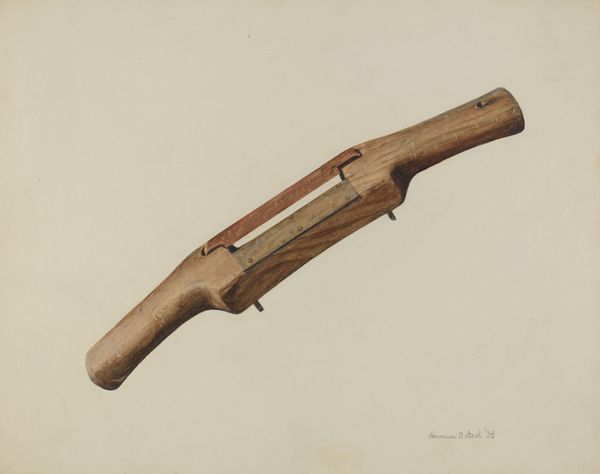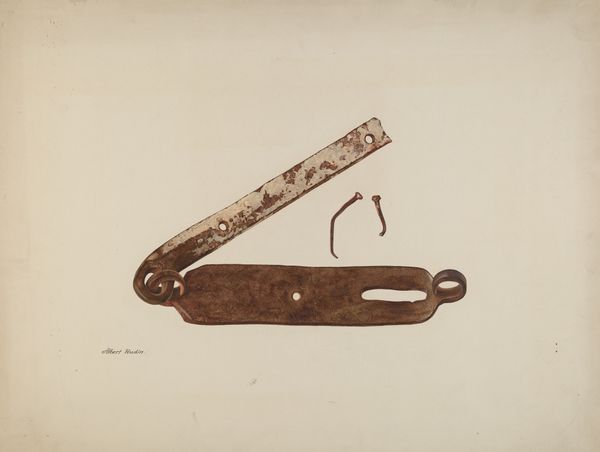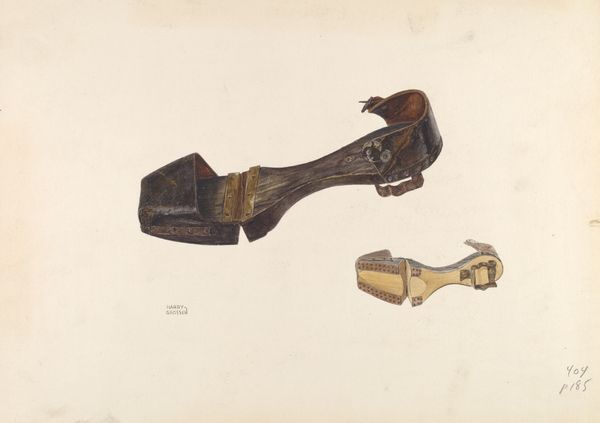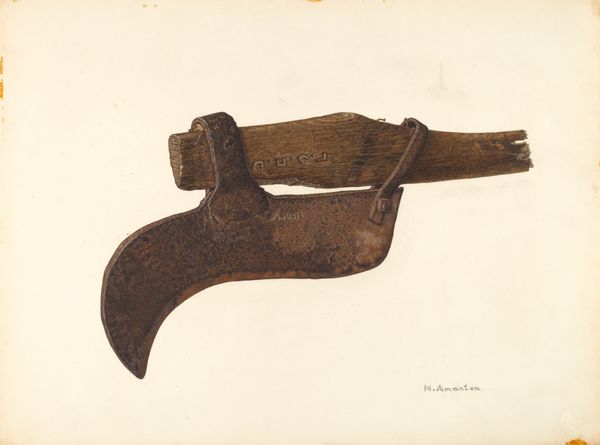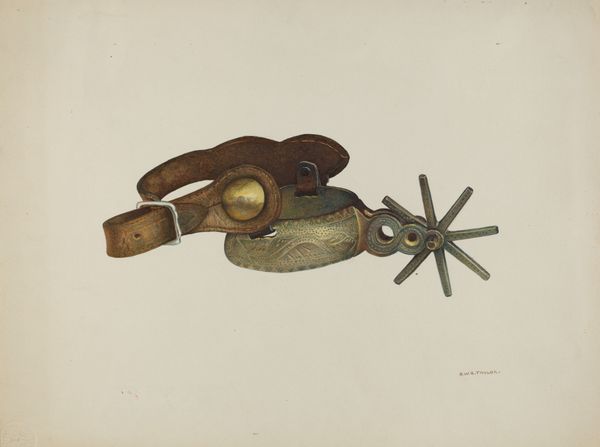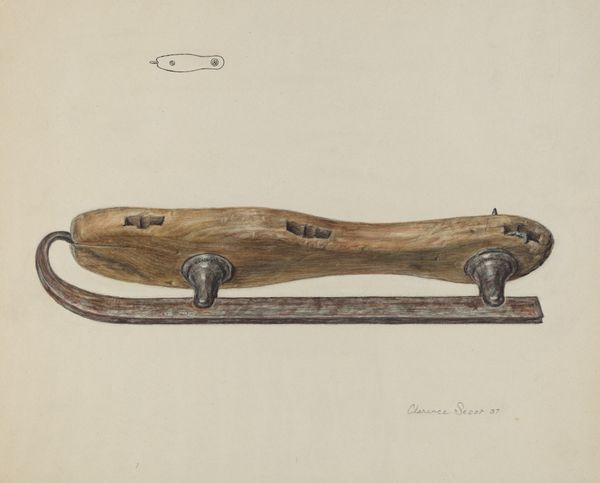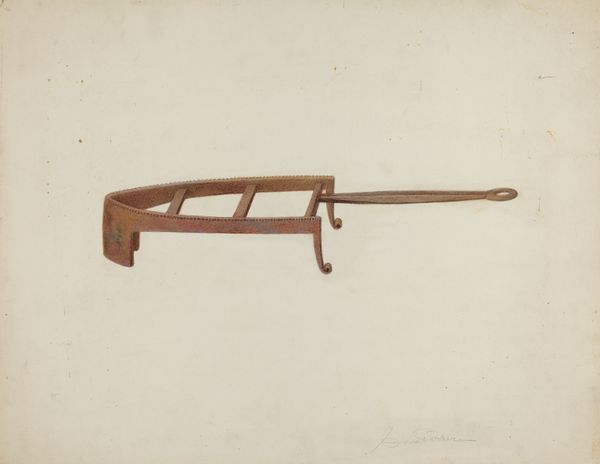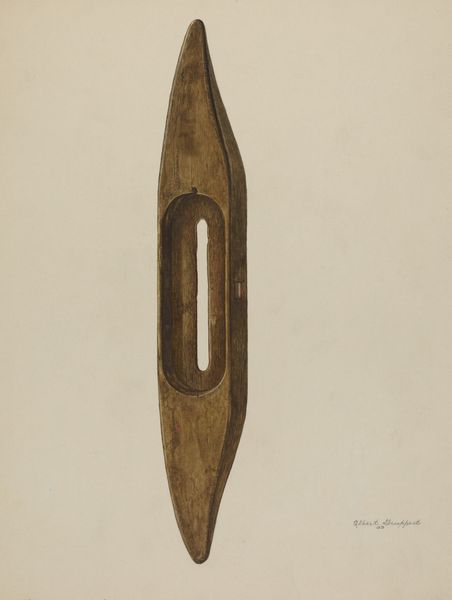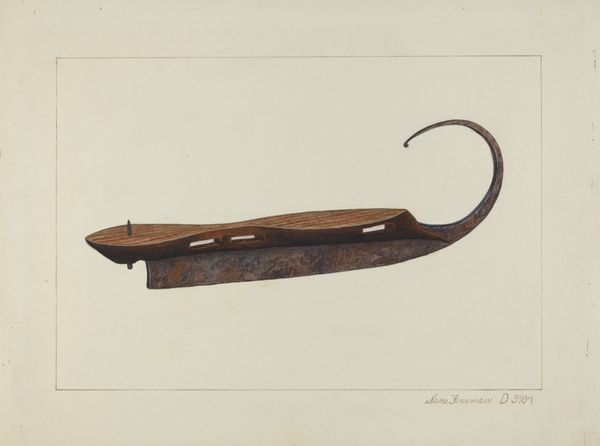
drawing, watercolor
#
drawing
#
watercolor
#
watercolor
Dimensions: overall: 35.5 x 51 cm (14 x 20 1/16 in.) Original IAD Object: 14 1/2" long; 3 3/4" high; 3 1/4" wide
Copyright: National Gallery of Art: CC0 1.0
Editor: Albert Rudin’s "Bootjack," made around 1941, employs drawing and watercolor techniques to render a rather humble object. I'm struck by the artist's meticulous detailing and the way the composition guides the eye across the bootjack. What formal qualities stand out to you? Curator: It is intriguing how Rudin emphasizes line and form within the confined space of the picture plane. Consider the lines – are they descriptive, or do they aspire toward something beyond mere mimesis? Notice the almost austere application of color. Does this resonate with contemporaneous trends or does it reflect an aesthetic philosophy particular to the artist? Editor: The muted color palette certainly adds to its austere quality, yet there’s a strange intimacy in depicting something so commonplace. How does that tension function within the overall composition? Curator: The apparent ordinariness invites contemplation on the essence of form. Is the goal to celebrate an object's utilitarian beauty, or to dissect it into its fundamental components of shape and texture? Contemplate the interplay between represented texture and the watercolor medium used to depict it; a sort of push-pull that yields an intriguing visual outcome. Editor: That's interesting, how the medium becomes part of the message itself, not just the tool. Curator: Precisely. And by examining the placement of this "Bootjack" on a pale field and exploring the distribution of positive and negative space, we can attempt a comprehensive evaluation from a formalist perspective. It highlights aspects perhaps unnoticed otherwise. Editor: It’s fascinating how closely observing those elements—line, color, space—unlocks an entirely new level of appreciating an object like this. Curator: Indeed. These elements, when rigorously examined, offer a potent path towards interpreting artwork removed from external referents. A method of seeing; an aesthetic evaluation; or merely another valid method for decoding meaning? That will be the key question to be solved through further studies.
Comments
No comments
Be the first to comment and join the conversation on the ultimate creative platform.
